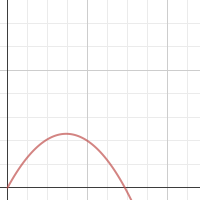ReluctantDecoy
NES Member
AR15 bullet: Up to 3260 ft/sec; which is .617 miles/sec; or 2,221.2 MPH.
2 miles is 10,560 feet.
If I have a map on my screen that has a length of 2 miles in it.
It would take 3.24 seconds to move my mouse pointer those 2 miles on the map.
My counting One Mississippi, Two Mississipi, Three Mississippi and moving my pointer on the screen in that time frame - that is how fast a bullet goes.
The route in blue is about 2 miles. (for distance purposes)
From end to end it takes 3 seconds for a bullet to travel that far.
Each different firearm and bullet will have a different range, with tons of other variables including weather, windspeed, the trajectory, and so on. For the sake of consistency, we're going to assume that you are aiming for max distance with whatever gun and bullet you choose, and that you've chosen a fairly standard shooting apparatus. According to the National Rifle Association, if you're going for distance, the optimal angle of elevation is around 30 degrees from horizontal.
The NRA says that for a 9 mm handgun, the most popular handgun according to Guns.com, a bullet will travel up to 2,130 yards, or about 1.2 miles. For a Colt .45, the next most popular handgun, you're looking at about 1,850 yards, which is just about 1 mile.
Of course, handguns aren't long-distance firearms. Rifles are built to be more accurate from greater distances. The notorious AR-15 rifle is the most popular, according to the NRA, and its maximum range is around 3,840 yards, or 2.2 miles. Bear in mind, those of you with dreams of long-distance hunting, that maximum range is far from effective range, so the odds of hitting a target at that distance are slim.
If you're wondering what the maximum distance is that a gun has ever been used effectively, BBC says it's 3,870 yards, just over 2.2 miles. A Canadian special forces sniper made the shot in Iraq in 2017, killing an Islamic State militant.
Read More: How Far Can A Bullet Travel?
So, if you fire a gun at 30 degrees, it could travel 2 miles which would take 3 seconds for the maximum distance.
For maximum time in the air you can shoot it straight up.
For the next question, imagine the trajectory shown as an arc over 2 miles.
Can any physics majors confirm this?
View attachment 566892
Pro-tip: If you right click in Google Maps and select "measure distance", you can set two cursor points and have a linear measurement with a visible ruler. You can then pull either end to re-orient, stretch or shrink. Slightly better for this application over driving routes.



